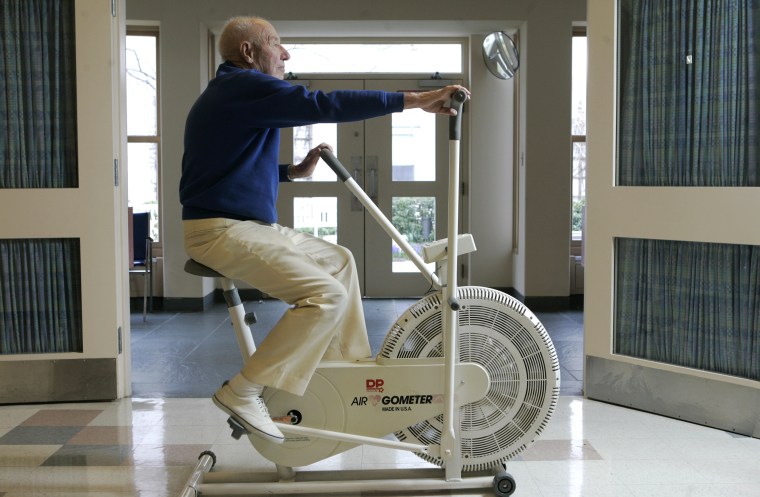You wouldn’t be blamed for thinking the game might be over for tau therapy, a cutting-edge Alzheimer’s disease treatment.
The bad news this week about a new Alzheimer’s drug designed to reduce toxic tau proteins in the brain hit the medical world with a resounding thud. Researchers reported at the Alzheimer's Association International Conference in Toronto that TauRx's once-promising experimental drug showed no benefit in the vast majority of patients with mild to moderate Alzheimer’s disease.
RELATED: TauRx Alzheimer's Drug LMTX Fails in Large Study Although Some Benefit Seen
However, experts on the front lines say there is still hope for drugs that target tau proteins.
“Tau therapy still is a very interesting approach to Alzheimer’s disease," Dr. Ronald Peterson, director of the Mayo Clinic Alzheimer’s Disease Research Center, told NBC News.
While Alzheimer’s experts acknowledge that this particular drug trial was not a success, he says, that study in no way diminishes the enthusiasm for targeting tau proteins as a way to treat patients.
So what exactly is a “tau protein,” and why are doctors so excited about drugs to treat its toxic state? Here are four things to know.
1. Tau protein is an essential part of the brain, but it can also be its worst enemy.
In a healthy brain, tau proteins stabilize the brain cells and make sure they get all the nutrients they need. However, in people with Alzheimer's disease, tau proteins — for unknown reasons — collapse into twisted strands called tangles. These twisted strands of “toxic tau” now do the opposite of what they’re supposed to do: In its toxic form, tau protein keeps the brain cells from getting nutrients and other essential supplies, and the cells eventually die.
2. Toxic tau can spread through the brain and worsen Alzheimer's disease.
Once the tau protein gets out of control and becomes toxic tau protein, there seems to be a chain reaction that ultimately destroys the brain. Researchers at Columbia University Medical Center recently showed that toxic tau can even jump from one brain cell to another. This might explain why in the early onset of the disease, Alzheimer’s affects primarily one area of the brain but in the disease’s later stages we see damage throughout most of the brain, Alzheimer's always gets progressively worse, never better.
3. Brain injuries can fuel the formation of toxic tau protein.
Recent studies have shown that repeated brain injuries like concussions can cause normal tau proteins to change their shape and become toxic tau proteins, setting off a chain reaction that kills brain cells.
Experts think that the formation of toxic tau through brain injuries might be what drives a condition called “Chronic Traumatic Encephalopathy,” or CTE, a disease of the brain found in athletes with a history of repetitive brain trauma, leading to memory loss, confusion and depression.
4. Exercise seems to improve levels of tau protein in patients with Alzheimer's.
In a study presented at last year’s Alzheimer's Association International Conference, researchers made older patients in the early stages of Alzheimer’s do aerobics on a treadmill for 45 minutes to an hour, four times a week. After six months, the scientists saw that levels of tau protein in the patients’ spinal fluid fell and they also had better blood flow in the memory centers of their brains. Even though exercise can’t heal Alzheimer’s, these finding suggest aerobics can impact Alzheimer’s-related changes in the brain — in this case, by decreasing the tau protein levels.

